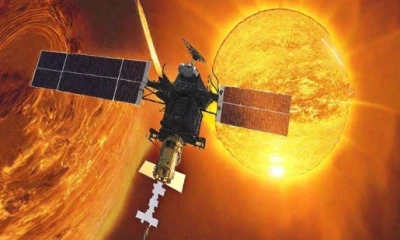In a significant achievement, ISRO or Indian Space Research Organisation has successfully deployed a six-meter-long magnetometer boom on the Aditya-L1 satellite. Launched with the purpose of measuring the low-intensity interplanetary magnetic field in space, the boom was activated on January 11 after being in a stowed condition for 132 days since the Aditya-L1 launch.
Positioned in the Halo orbit at Lagrange point L-1, the boom carries two cutting-edge, high-precision fluxgate magnetometer sensors designed to measure the interplanetary magnetic field.
The deployment strategy involves mounting the sensors at distances of 3 and 6 meters from the spacecraft body. This configuration minimizes the impact of the spacecraft’s generated magnetic field on measurements, with the dual-sensor system enhancing precision by cancelling out the spacecraft’s magnetic influence.
Constructed from carbon fiber-reinforced polymer, the boom segments provide interfaces for the sensor mounting and mechanism elements. The articulated boom mechanism, comprising five interconnected segments driven by spring-driven hinge mechanisms, allows for both folding and deploying actions.
Bharat’s maiden solar mission, Aditya-L1, reached the L1 point, approximately 1.5 million km from Earth, on January 6, 127 days after its launch on September 2, 2023. The primary objective of the solar observatory at L1 is to continuously observe and understand the chromospheric and coronal dynamics of the Sun.
The successful deployment of the magnetometer boom marks a crucial step in advancing the capabilities of Aditya-L1 for in-depth analysis of space’s magnetic phenomena.

















